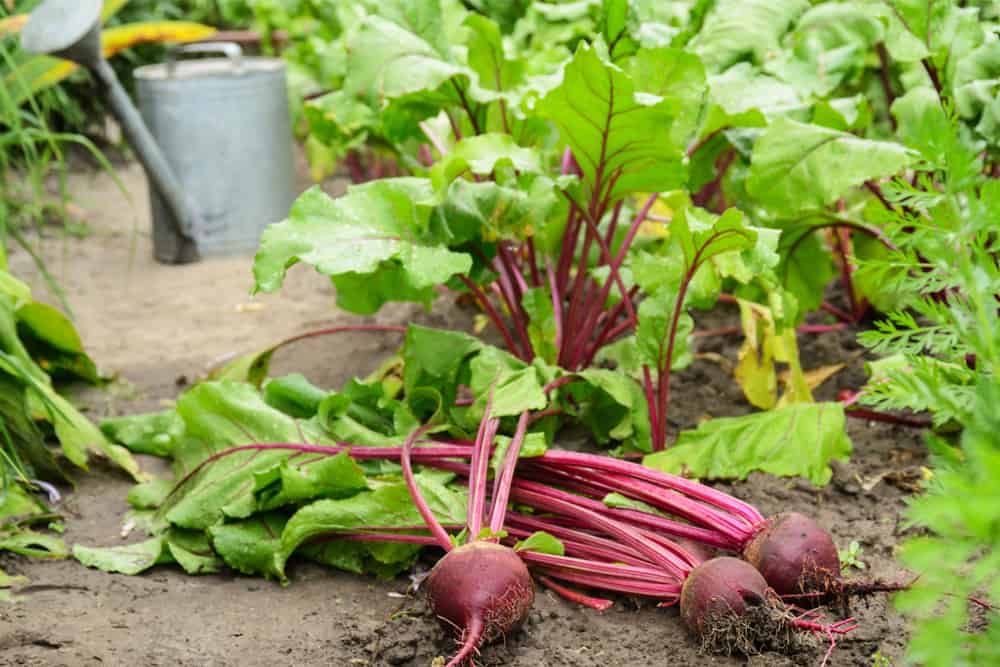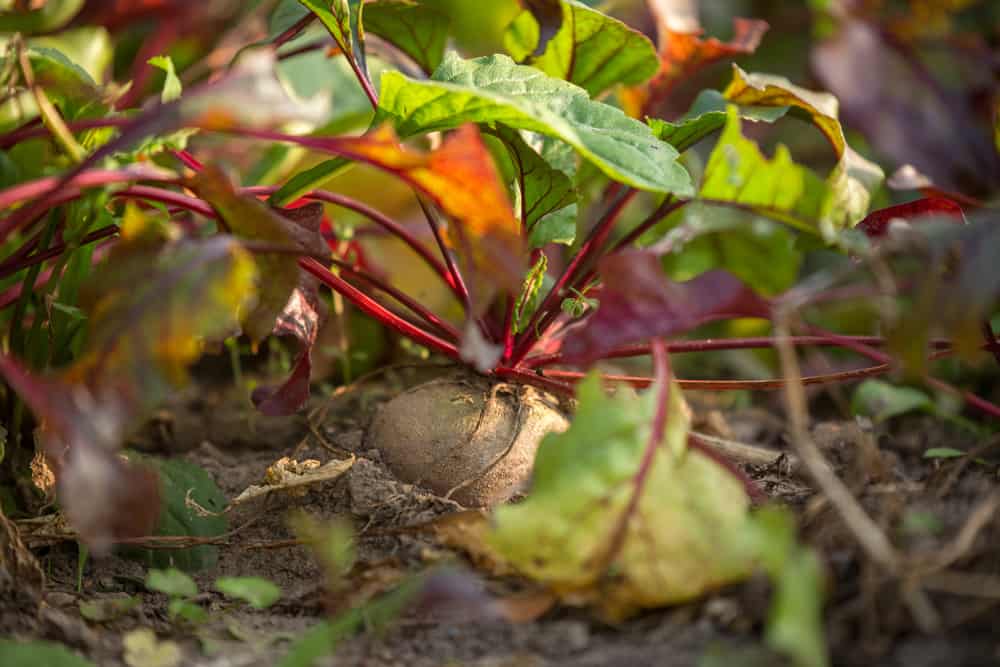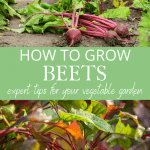How To Plant, Care For & Harvest Beets In Your Vegetable Garden
From starting beet seeds to harvesting, we share the best tips for growing your own beets. Whether you have raised garden beds or containers, growing beets is easy and you can enjoy a successful beet harvest with these expert tips.

Disclosure: This post contains affiliate links, which means if you make a purchase through these links, we may receive a small commission at no extra cost to you.
If your only experience with beets is from a can, it’s time to try fresh garden beets. Roast them with some olive oil and salt, steam them, or grate them in a salad and you’ll fall in love with the fresh, earthy, sweet flavor. They also come in a variety of colors, making an everyday side dish look stunning.
Beets are easy to grow in your vegetable garden. You can even eat the greens, and we toss them in salads along with other baby greens.
Planting Beets
Prepare the soil Add compost and organic fertilizer.
Seed You can direct seed beets in your garden about 4 weeks before your average last frost. Each beet “seed” is actually a conglomerate of multiple seeds. However, beets are notorious for poor germination, so you still want to sow densely.
Plant Using your finger, a stick or a hoe handle, make a furrow ½” deep down the soil (the width of your raised garden bed). It’s recommended to plant beet seeds 1-2” apart, but we sow more densely and thin the seedlings to use as baby greens. Cover the beet seeds lightly with soil and sprinkle with water.
Final Spacing You want final plant spacing of at least 4 inches.
Tip Since beets tolerate both heat and cold, and grow pretty quickly, they’re the perfect crop for succession planting. Sow a new crop every 2-3 weeks throughout the season to have a continuous supply.
Caring For Beets
- Soil: Beets need adequate and consistent moisture to keep from becoming tough and stringy, so mulch with straw or another organic material.
- Sun: Beets do best in full sun, but can tolerate some shade.
- Supplement: We fertilize with liquid organic fertilizer once a month.
- Pests: Beet plants are attacked by the same leafmining fly that also attacks spinach and Swiss chard. If you see “tunnels” in the leaves of your beets, you know the fly is around. Immediately remove any leaves with evidence of mining so the fly cannot complete its lifecycle. Dispose of the leaves in the trash instead of leaving them in the garden. Look for leafmining fly eggs by turning the beet leaf over and looking for a neat row of several white eggs. If you smash them before the larvae hatch they will not do any damage to the plant. This approach can be tedious, so we have the best success by keeping beet plants covered early in the season with lightweight floating row covers. The best way to deal with this pest is to put the row covers down early, before you have any flies in the garden. We recommend the lightest row covers you can find.

Harvesting Beets
You can harvest beets when the root is about the size of a golf ball or larger. Small beets can be grated or shaved and used directly in salads, and are also tasty steamed. They have a nice, sweet flavor at this size. Loosen the soil around the beet with your finger and gently pull it from the soil.
If you want large bulbs, watch them over a week or so to see when they’ve stopped getting larger. Once the beets achieve maximum size, they can be harvested and stored indoors for a lengthy period (if storing for a longer time, let the soil dry and brush it off before storing; otherwise, wash off the dirt and prepare for eating).
Beets also do fine if you just leave them in the garden and harvest over a period of several weeks. If you leave them too long they can supposedly become tough, but we rarely have this problem.
Harvest the beet greens at almost any time, beginning when thinning seedlings. Take one or two mature leaves per plant, until leaf blades are more than 6 inches tall and become tough.
In the video below, Jeremy shows you our harvesting strategy for lettuce, but the same thinning strategy applies to baby beet greens as well.
Our Favorite Beet Varieties
Some of our favorites:
- Red Cloud
- Detroit Dark Red
- Merlin
- Chioggia (beautiful color)
- Touchstone Gold
More Gardening Inspiration
images via depositphotos

